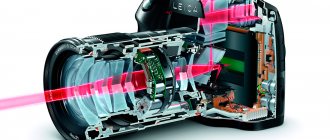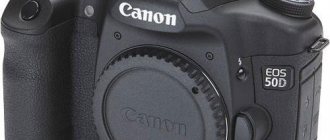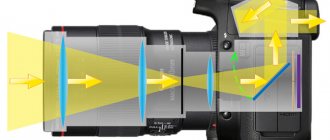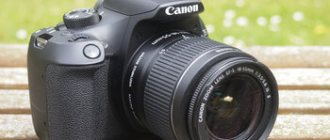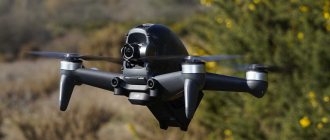Memory is an unreliable thing, so in order to preserve important moments for a long time, humanity has come up with various types of art of “capturing” reality. One of the most popular is still photography. Moreover, with the advent of almost every person having a smartphone, this type of art is becoming even closer.
However, professionals and many amateurs still advise using special photographic equipment: DSLR, mirrorless or compact to obtain high-quality results. How not to get lost in the variety of models offered and what is the difference between a DSLR, compact and mirrorless camera? How are these devices different? Find out in this review!
Before starting to get acquainted with various types of photographic equipment, it is worth making a special reservation. What exactly refers to a digital or SLR camera?
What is a digital SLR camera? These are compact SLR cameras that not only have a processor, like all digital ones, but also the presence of a special system of glass and mirrors.
A simple SLR camera with only mirrors can be electronic, or maybe film (for example, digital and analog cameras).
And now in more detail about the principles, pros and cons of each camera.
What is a SLR camera?
A DSLR is a camera whose viewfinder is based on a mirror. In general, there are single-lens and double-lens SLR cameras. But since in the world of digital photography there is only room left for the first type, it will be discussed further.
The first single-lens reflex camera appeared in 1861. Yes, while serfdom had just been abolished in Russia, the camera had already been invented in England. That is, the history of the SLR camera began in the century before last, more than 150 years ago.
Of course, the first SLR cameras were very different from what we have now. One of the differences is the use of film. Today, film, as you all know very well, is practically extinct and exists only thanks to enthusiasts who fell in love with film photography once upon a time. Digital technologies have made it possible to replace the film in the camera with a matrix.
Let's return to the design of a SLR camera. Every DSLR has a mirror-based viewfinder. The mirror stands at an angle of 45 degrees and allows you to see a real non-digitized image through the viewfinder. The mechanism, in general, is quite simple from the point of view of understanding. Through the lens, light (and the image, respectively) enters the camera body, where a mirror is installed at an angle of 45 degrees. The light reflected by the mirror rushes upward, where it enters a pentaprism (or pentamirror), which wraps around the image, giving it its normal orientation. Simply put, if there were no pentaprism, the image in the viewfinder would appear upside down. That's all. This is the optical viewfinder - a distinctive feature of any DSLR.
How cameras work
This type of camera has several additional processes that occur during shooting compared to digital devices. The image obtained through the lenses goes through several stages of processing before the image is displayed on the device’s matrix.
Operating principle of a SLR camera:
- Initially, the glass covers the matrix, being in the standard position.
- Afterwards, the rays hit the frosted glass, passing to the optical system (pentaprism). Here the image is flipped 90 degrees to appear on the sensor at the correct angle.
- After the user presses the button that takes the photo, the mirror moves to the second position. At this time, the shutter moves back and the image is projected onto the camera matrix.
- The last stage that a photograph goes through is reading the information and displaying it on the camera screen.
Thus, having gone through all the specified stages of processing and conversion, the image is saved in the device’s memory. If you use a DSLR camera correctly and know how the camera works, your pictures will be clear and of high quality.
What is a mirrorless camera?
A mirrorless camera, just like a DSLR camera, has interchangeable lenses. But, as you understand from the name, it does not have a mirror viewfinder. Inexpensive cameras use a screen instead of a viewfinder, while more expensive cameras use an electronic viewfinder. In fact, unlike an optical viewfinder, such a viewfinder shows us a digitized image. We can say that this is a small screen. It has a certain resolution, which is indicated in the camera specification. Naturally, as with a monitor, the higher the resolution, the better.
Viewfinder
In mirrorless cameras, manufacturers have removed the mirror block and replaced it with an electronic viewfinder. What's better? The question is ambiguous. On a mirrorless camera, in the viewfinder you immediately see the frame as the camera sees it. By changing the shutter speed and aperture, the result is immediately visible. This is very useful for beginner photographers.
With an optical viewfinder, things are much more complicated. Through it we see the world as our eyes see it. You only have to rely on the built-in exposure meter. But it has a number of advantages.
It does not delay when shooting moving objects. And under poor conditions, it provides better light and color rendition.
Why is a DSLR camera better than a mirrorless camera?
Let's first talk about why a DSLR is better than a mirrorless one.
- An optical viewfinder is not only a feature of a DSLR camera, but also its advantage over a mirrorless one. There are several reasons for this. First, the optical viewfinder shows the image in real time, raw and undigitized. That is, as your eye would see it without a viewfinder. Secondly, when using an electronic viewfinder there is a slight delay in the image, which is not present with an optical viewfinder. Those. with the latter you always see the picture in real time.
- Phase detection autofocus is unique to DSLR cameras. The latest models of mirrorless cameras have learned to use phase sensors on the matrix, thereby giving birth to a hybrid focusing system, but today it still does not reach the focusing speed of a SLR camera.
- DSLRs have better ergonomics This is due, among other things, to the fact that the mirror itself with the pentaprism takes up quite a lot of space in the carcass. Because of this, in fact, these cameras are so large. But this minus turns into a plus when you need to control the camera: especially professional cameras have excellent access to all important functions using buttons, wheels and other controls located on the body. Particularly noteworthy is the additional monochrome display, which is found in large SLR cameras and is never found in mirrorless cameras. This display is very helpful in professional photography, and it is never superfluous for amateur photography.
- Huge optics park . Remember when we said that SLR cameras have been produced for a century and a half? Nikon began producing cameras in the 50s of the twentieth century. Today, Nikon's optics fleet is huge and continues to grow. Of course, mirrorless cameras are still far from achieving such richness.
- DSLR cameras are generally less expensive Specific example. There is a Nikon D5100 with a Nikon 35mm 1.8G DX lens. This is a very inexpensive kit, costing less than 20 thousand. To get similar quality with a mirrorless camera you need to spend a lot more money.
- A DSLR camera turns on much faster than a mirrorless camera. In a split second, while mirrorless cameras can turn on in 3 seconds.
- life of DSLR cameras is significantly longer than that of mirrorless cameras. And the batteries themselves are usually more capacious. Thus, amateur cameras like the Nikon D7100 can shoot one and a half thousand frames on a single charge. Professional equipment, like the Nikon D4, can take more than 3 thousand pictures with a single battery charge.
- DSLR cameras are more reliable . Some of them have dust and moisture protection. This is why you are unlikely to see a photographer with a Sony A7 in the savannah. But with Canon 1Dx there is nothing to do. There are more of them there than lions and bison...
So, the main thing: today, professional shooting with a mirrorless camera is almost impossible. A DSLR camera is preferable for commercial photography. And the amateur must decide for himself whether the advantages of a DSLR are important to him, or whether what a mirrorless camera offers is enough. More on this below.
How it all works
First, the light passes through the lens, then moves to the aperture (we can adjust its amount, this is exactly the same indicator with the letter F), reaches the mirror, is reflected and passed through a prism, which directs the light into the viewfinder.
On the display we see a picture (with certain settings) and we can see additional information - about shutter speed, aperture opening, and simply about battery charging.
At the moment when that “click” occurs, the mirror rises and the shutter lowers. After this, the light finally reaches the matrix - and everything is ready. The shutter is closed again, the mirror is lowered - and the camera is ready for new shots.
The processor is the “brains” of the digital device, with the help of which it understands that we finally want to switch from auto to manual mode in order to try all the fun. It would take a long time to describe the operation of the camera, but everything happens in less than a second.
Why is a mirrorless camera better than a DSLR?
Yes, but are there any advantages to a mirrorless camera that a DSLR camera doesn’t have? Eat. And now we will talk about them.
Olympus technology is one of the most popular mirrorless cameras on the market
- Size . This is the most obvious. Mirrorless cameras are smaller. The optics for such cameras are also more compact. As a result, you can get a mirrorless system that will be smaller than a DSLR, but will allow you to get the same high-quality images.
- Electronic viewfinder . Electronic viewfinders also have their advantages. Firstly, they can display various additional information. Secondly, such viewfinders will be more convenient for nearsighted people. You need to use the optical viewfinder with glasses or use the diopter correction function, which is enough for vision of -2.5, but if the minus is greater, then alas. The electronic viewfinder, as we said above, is a screen. And, of course, when used by a nearsighted person, there are no problems with it.
- Large selection of manufacturers . Mirrorless cameras are now produced by the following companies: Nikon, Canon, Sony, Panasonic, Olympus, Fujifilm, Samsung. But affordable DSLRs are produced only by the first 3 companies plus Pentax.
Autofocus
Here the advantage is still on the side of SLR cameras. Mirrorless cameras, due to the lack of a mirror block, use less technically advanced contrast autofocus. It focuses slower and not as accurately as a DSLR.
Technologies do not stand still and the autofocus of mirrorless cameras is already very close to the autofocus of SLR cameras. Therefore, it is impossible to give an absolute advantage to DSLRs.
What do DSLR and mirrorless cameras have in common?
There is one thing that these cameras have in common.
- Matrix . The most important part of a digital camera. Just a couple of years ago, I would have said that mirrorless cameras do not have a full-frame sensor. But Sony corrected this by releasing the A7 series cameras. They have matrices that are not inferior to those used in SLR cameras. We have already talked about matrices more than once; there is no need to repeat ourselves.
- Systematicity . For some reason, many people call mirrorless cameras system cameras, forgetting that DSLR cameras also belong to this class. This is the similarity between DSLRs and mirrorless cameras - these are system cameras that feature interchangeable optics.
What's better? DSLR or mirrorless?
There is no clear answer to this question. Everyone must make their choice based on their needs. My opinion is that DSLR cameras today are still too much superior to mirrorless cameras. For me personally, when choosing a camera, the most important criteria are speed (focusing, switching on), a wide selection of optics and price (both for the camera and lenses). Yes, you don’t always want to take a huge mirror set with you. It's better to have a choice. For example, for large (long, important, etc.) filming, have a DSLR, but for the soul - something small, maybe not even a mirrorless camera, but a compact camera like Fuji x100s or the like. But if you choose one single camera, then again, I would choose a DSLR. But that's just my opinion. What would you choose?
Related articles: Types of cameras How to choose a DSLR camera The best DSLR cameras 2014
